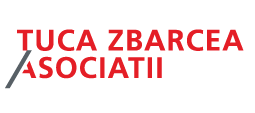ACI Partners Managing Partner Igor Odobescu, Nagy es Trocsanyi Founding Partner Peter Nagy, Kinstellar Partner Radovan Grbovic, Law Office Vujacic Partner Sasa Vujacic, and Tuca Zbarcea & Asociatii Partner Robert Rosu discuss recent litigation trends across CEE, driven by the impact of economic shifts and regulatory changes in their jurisdictions.
Steady Increase
“In the Serbian jurisdiction, there has been a slight uptick in litigation, which we interpret as a short-term increase,” states Grbovic, shedding light on the immediate effects of economic challenges. He elaborates that the increase is primarily due to “recent economic uncertainties, making it more challenging for market participants to meet their obligations.” During such times, he notes, “contract breaches become more frequent, leading to a rise in litigation.”
Parallel trends are observable in Hungary, where Nagy comments on the fiscal conservatism prompted by the economy. “Government and companies alike will have to do the best they can with last few years’ meager economy.” This austere environment, he suggests, cultivates “a penny saved is a penny earned” attitude that significantly heightens litigious behavior, particularly in “tax and construction disputes.”
Rosu’s observations on Romania align, with the Tuca Zbarcea Partner noting a steady increase in litigation related to public administration. “At least based on our activity levels which have grown steadily over the last 12 months,” he adds, pointing out the uptick in disputes over “public procurement and administrative litigation,” especially concerning tax litigation and building permits.
However, Grbovic proposes that the current rise might not continue. “While there was a slight increase in litigation, it is likely that a contrasting trend could develop over the long term. Economic uncertainties may lead to fewer transactions among businesses and individuals. This decrease in economic activity naturally results in fewer disputes and, consequently, less litigation,” he says.
And in Moldova, Odobescu argues that “the number of litigations will remain constant in the following years, with no considerable changes.” This expectation is underscored by a new legal framework that adjusts court fees, which he believes will “raise the litigation costs to initiate proceedings on pecuniary claims, where significant amounts are involved.” However, alongside a decrease in commercial litigations, he does anticipate a slight increase in administrative ones.
“During the last three years, we have observed an increase in administrative litigations, where private entities challenge administrative acts issued by public authorities,” Odobescu explains. This shift is partly due to more stringent regulations and the public’s greater willingness to challenge administrative decisions.
In contrast, Serbia sees a diverse litigation range. “The uptick in litigation primarily manifests in contract disputes and securities, sectors notably sensitive to economic shifts,” says Grbovic. Moreover, he highlights an “increase in the construction sector, as there have been substantial investments in infrastructure projects within the past few years, as well as an increase in the number of construction-related companies and entrepreneurs in Serbia.”
Montenegro’s Vujacic echoes this complexity. “Commercial disputes are one area where litigation has significantly increased, especially when it comes to contracts, debt collection, and company transactions. Furthermore, as Montenegro updates its legal system to meet EU requirements, there is an increasing focus on intellectual property rights protection,” he says. Vujacic also mentions the labor law disputes inflamed by recent legislative changes, marking a significant rise in cases filed by employees over compensation claims.
Catalysts for Increased Litigation
The increase in litigation across these countries is multifaceted. Grbovic identifies economic downturns as a primary catalyst, with “a decline in income, deterioration of debt-paying ability, layoffs, and restructuring” leading the charge in Serbia. This is compounded by the sectoral spikes in construction disputes due to “more litigation, especially among clients, contractors, and subcontractors, primarily over contract disagreements and project delays.”
Nagy highlights the proactive fiscal policies in Hungary as a litigious trigger. “Year after year, the government eagerly goes after maximizing its revenues, and new taxes and tax collection methods pop up,” which stirs significant resistance from affected parties. Looking at construction specifically, Nagy says that “the complexity of the construction business and its sometimes confusing documentation makes it an easy target for money-saving practices.”
Odobescu points to the EU accession and regulatory reforms in Moldova as additional drivers. “As an official candidate for EU membership, Moldova is committed to aligning its legal framework with the EU legislation.” This alignment often leads to litigation, especially as “the new rules imply significant penalties for non-compliance, and not all businesses will manage to adapt to the new legal framework,” he predicts.
In Romania, Rosu elaborates on the public procurement disputes driven by the extensive infrastructure projects. For example, the country has undertaken to develop a motorway network and other construction projects with European and national funds. “Many procurement procedures are being contested by the bidders,” leading to a growing number of legal disputes. Moreover, “another factor driving the uptick in litigations is linked to the difficulties of some companies in paying their current debts, which seems to be a consequence of the broader economic environment that had worsened after the COVID-19 pandemic and the Ukraine war,” he adds.
Courts (Try To) Adapt
As the number of cases climbs, courts across CEE are adapting their operational strategies. Nagy points out that, in Hungary, the “courts are having less appetite for details and are rather trying to cut corners when possible,” a pragmatic shift that, while streamlining processes, challenges litigants to present more concise and robust arguments. He goes on to add that an attempt to “organize administrative courts has failed” and that the “court procedure in administrative cases has been re-codified, making litigants’ lives sometimes miserable. New judges appear in administrative departments of courts who are somewhat slow in adapting.”
Grbovic laments the slow pace of digitalization in Serbian courts, which hampers their capacity to handle the increased caseload efficiently. “The courts are struggling to adapt to an increased number of litigation cases, especially in delivering timely decisions and scheduling trials.”
On the other hand, Odobescu highlights the successes in Moldova, where an integrated file management program “covers all the court procedural activities including registration, distribution, and file transfer. The distribution of cases is according to certain criteria, such as the nature of the case (civil cases, administrative, insolvency, etc.) and the complexity of a case,” he explains. “We believe that this allows for an equitable distribution of the workload among judges. Moreover, the Moldovan judiciary system is currently undergoing a reorganizational reform, purposed to merge the courts of appeal and increase the number of judges in the courts of first instance to face the increasing number of cases,” he reports.
“The most important measures were to delay scheduling the first court hearings after the filing of the court disputes and to increase the number of judges,” Rosu chimes in for Romania. He believes that the “upward trend in the number of disputes” is a consequence of “a reduced number of judges compared to the workload of the courts.”
Similarly, Vujacic reports that, in Montenegro, the courts are not at full capacity due to an insufficient number of judges. “This problem affects the capacity and effectiveness of Montenegro’s courts,” he says. “To improve the courts’ efficiency, the Ministry of Justice and the Judicial Council proposed amendments to the current Law on Judges and the Judicial Council,” which could “quickly fill the sufficient number of judges,” he concludes.
This article was originally published in Issue 11.4 of the CEE Legal Matters Magazine. If you would like to receive a hard copy of the magazine, you can subscribe here.




